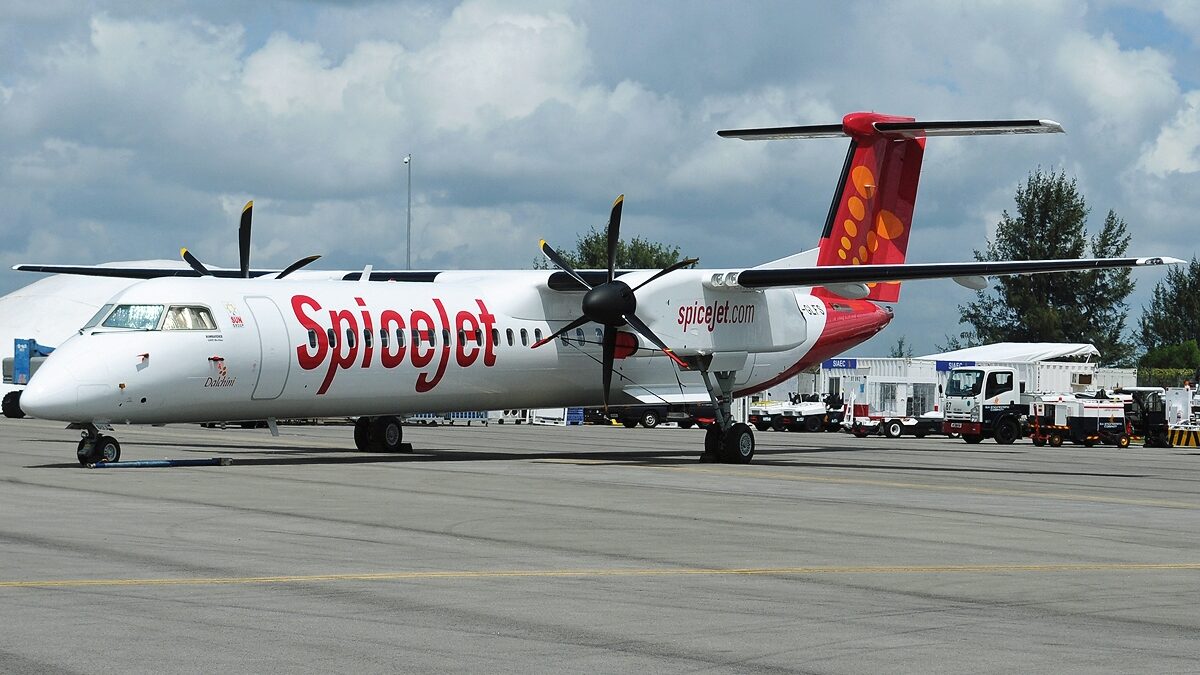Indian low-cost carrier SpiceJet is accusing De Havilland Aircraft of Canada of failing to adhere to commitments to provide the airline with financial assistance for an aircraft purchase agreement that is now the centre of an ongoing lawsuit.
The counterclaim is the latest in an ongoing lawsuit in the English High Court of Justice, where the turboprop manufacturer sued SpiceJet for about US$43 million in damages stemming from cancelled purchase agreements. De Havilland says SpiceJet has failed to make the requisite payments for 19 De Havilland Aircraft of Canada Dash 8-400s, which were part of a purchase agreement signed in 2017.
In the counterclaim, SpiceJet says De Havilland had agreed to provide financial assistance for the Dash 8-400s via a sale-and-leaseback arrangement.
SpiceJet says the manufacturer failed to obtain financial assistance or competitive financing deals for them as a guarantor, following which the airline had to arrange its own financing. When SpiceJet’s own lender stopped financing some of the Dash 8-400s in 2019, it could not afford to take delivery of any more aircraft, it says.
SpiceJet says that the amount it is owed for De Havilland’s violations offsets the original US$43 million claim by the manufacturer.
De Havilland Canada chief operating officer Todd Young confirms to Smart Aviation APAC that the manufacturer is aware of the new claim, and adds that no further comment can be made on the court case.
Young says De Havilland has also not yet resumed full production at its aircraft assembly plant, given the uncertainty posed to the aviation industry by COVID-19. But the manufacturer has already brought back employees focused on Dash 8-400 delivery-focused activities, and is now in the process of bringing back staff involved in supply chain and procurement, he adds.
Despite some airlines pausing expansion plans, Young says De Havilland is now getting inquiries for the Dash 8-400 from some domestic operators. This market includes operations to remote regions, where national carriers are seeing the need to reach challenging airports, as well as domestic sectors lacking efficient services, he adds.
“In [these cases] there is a certain ‘essentiality’ to the type of service the Dash 8-400 can provide. We have also seen an uptick in demand for the Dash 8-400 in utility roles such as to carry freight or in multi-role or specialized operations by private or government agencies,” Young says.
Editor’s comments:
It is quite common for aircraft manufacturers to introduce aircraft buyers to lessors that then purchase the aircraft and then promptly lease it back to the airline. But, of course, making that happen depends on finding a willing lessor.
In terms of current market demand for Dash 8-400s, Young’s comment about the essentiality of turboprops is interesting. There have been reports that airlines are opting to use the smaller capacity aircraft – such as the Dash 8 – to resume operations, as the aircraft is easier to fill. Young was quoted in another report saying that TAAG Angola Airlines wants to take delivery of its Dash 8-400s on order, because it wants to resume domestic operations using the aircraft. The trip cost of a turboprop is far lower than a jet. In Australia, we saw Qantas Airways recently resume operations on the Sydney-Melbourne route using a Dash 8-400. This was remarkable as Sydney-Melbourne used to be one of the top five busiest air routes in the world.
Photo: Aldo Bidini

